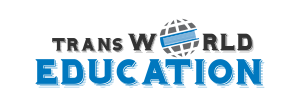Human capital management (HCM) training programs are designed to improve workforce performance and build organizational capacity. By providing employees with the knowledge, skills and abilities they need to be successful in their roles, HCM training programs can help organizations achieve their strategic objectives.
Objectives:
The objectives of an effective mule soft training program should be aligned with the organization’s overall strategy. Training programs should be designed to improve workforce performance in specific areas that will have the greatest impact on the organization’s ability to achieve its goals.
The training program should be designed to improve workforce performance in specific areas that will have the greatest impact on the organization’s ability to achieve its goals. The program should address the needs of the organization and the employees, and should be based on a thorough analysis of the organization’s goals, workforce requirements, and the current skills and knowledge of the employees.
Audience:
The audience for an HCM training program will vary depending on the focus of the program. In general, programs should be designed for employees who will be directly responsible for implementing HCM processes and tools. For example, a program on mulesoft online training data collection and analysis might be geared toward HR professionals, while a program on HCM system configuration and maintenance would be more appropriate for IT staff.
Content:
The content of a mule soft training program should be based on the needs of the target audience. Programs should cover the essential knowledge, skills and abilities required for employees to be successful in their roles. Training should be delivered in a variety of formats, including classroom, computer-based and on-the-job, to accommodate employees with different learning styles.
HCM training should be structured so that employees have the opportunity to immediately apply the skills they learn. In addition, training should be reinforced through periodic refresher courses, to ensure that employees maintain the required knowledge and skills.
Delivery:
HCM training programs can be delivered using a variety of methods, including classroom instruction, e-learning, webinars, and on-the-job training. The delivery method should be based on the needs of the target audience and the objectives of the program. The curriculum for a mule soft training program should be designed to meet the needs of the target audience and the objectives of the program. Training programs should be designed to provide participants with the knowledge and skills necessary to effectively manage human capital in their organizations.
Evaluation:
HCM training programs should be evaluated to ensure that they are achieving their intended results. Evaluation methods may include pre- and post-tests, surveys, and focus groups. The Final Rule also requires covered employers to conduct annual reviews of their performance in protecting workers from exposure to hazardous chemicals and to make improvements based on the results of the reviews. To learn more about the Final Rule and OSHA’s other requirements regarding the labelling of hazardous chemicals and employee training, please visit the agency’s Wacom Web page.
Conclusion:
Mule soft training programs are a critical component of any organization’s human capital management strategy. By providing employees with the knowledge, skills and abilities they need to be successful in their roles, mule soft training programs can help organizations achieve their strategic objectives.
















